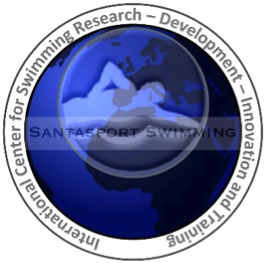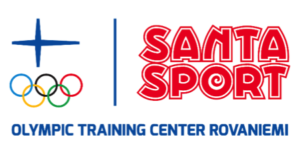Courtesy: Jukka Shemeikka, Head of Aquatics at the Olympic Training Center Rovaniemi, Finland.
As a part of its Research, Development and Innovation (RDI), the Olympic Training Center Rovaniemi is running a competitive swimming development program called ‘Modern Dryland Training’. This arose from the simple objective of creating better solutions for dryland training for swimmers and coaches globally. Along the way, the focus has shifted to a bigger picture of having synergy between dryland training and pool training.
Welcome to an article series covering the last four years of our work on swimming development. You are now reading part three of the 4D swimming article series. In this article, I will go through future plans for the 4D swimming research project. If this is your first time reading about the 4D swimming project, I highly recommended that you read the first two parts before starting this one.
This article series covered the opening phase of the 4D swimming research project, which studied the coordination effects on propelling efficiency and swimming economy in front crawl swimming. The results really opened our eyes and steered our research in a new direction. The research findings gave us broader insight for future research phases.
The first phase taught the broader meaning of kicking as part of performance. The main takeaway from phase one was how different coordination groups utilize the legs. If you focus only on kicking hard, it is possible that you will fail to understand fast swimming. A lot more information is needed to fully understand coordination, but it is possible that swimming can take big steps in development as we learn more.
Front Crawl Phase II
In phase two we will study coordination effects on propulsion and drag in front crawl swimming. The goal is to identify different coordination groups and compare the differences in propulsion and drag in between the swimmers inside a certain group and in between groups. For this research phase we will gather four different groups starting from age 13, with the minimum group size being five swimmers.
COVID-19 pandemic affected everyone and everything around the world. We also needed to adjust our strategy to be able to continue our work. To ensure the continuation of our work, we acted quickly and decided to add our research capability at the Olympic Training Center. We should reach full capability to start phase two in Rovaniemi at the end of the year, or at the beginning of 2021 the latest. The calm situation with regard to the COVID-19 pandemic, our own pool facility and testing swimmers one by one allows us to continue working safely.
In May, we tested a new protocol that seems to work for our purposes. The new protocol makes the testing faster, but it also makes it possible to gather field experience with high-performance athletes and their coaches around the world. We also outlined the third phase of the front crawl, in which we will study the effects of physical exertion on swimmers in different coordination groups.
Other Strokes and distances
Although we have our eyes set on phase two of front crawl, we have progressed with backstroke development and are ready to start research on it as well. Based on the progress made, I believe people will find the research phases of backstroke very interesting. I believe that swimmers will be able to identify more easily with the results of backstroke.
It will be exciting to see the results. Will we see similar results on backstroke as we have seen in front crawl? Even though there are similarities with long axis strokes, the coordination is opposite in backstroke compared to front crawl. As for front crawl, we look for 4-point connection from opposite side leg and arm, in backstroke we look for it from same side leg and arm. Finding that connection makes a big difference for the swimmer. As one of our OTC team swimmers said: “As I found the connection it changed the feeling of the stroke. Earlier I felt like someone was pushing me from my shoulders and now it feels like someone is pushing me from the hips. It also makes my kick easier.”
We do have a lot of work ahead, but that does not stop us from planning for the future and advancing to short-axis strokes and eventually to sprint swimming. It is widely recognized how important timing is in short axis strokes, but we want to find out if we have understood the source of timing correctly. More on this later, but if our hypothesis is correct, it will add more depth into butterfly and breaststroke analysis.
Final thoughts
Do some people have the ability to swim faster than others? That is a possibility and one that we will study in phase two. Still, regardless of research findings, the things that make people successful are dedication and hard work. You can’t replace that. The purpose of our research is not to place certain swimmers to a pedestal, but to provide swimmers and their coaches with an opportunity to better understand body coordination and the effects of coordination better, to help reach new levels in performance.
In training, we’ve focused on making harder swim sets, striving for better condition, kicking faster and doing more volume. Sometimes it feels like we have forgotten to listen to our bodies. We are just getting started, but I can’t help to wonder if talent is just the sright pieces fitted into one equation. Studying and understanding more about coordination, it’s development and the possibilities to affect it could determine the future of swimming development.
In discussions with various people around the world about the results of the first phase, one idea came up many times. It was how interesting it would be to study the development of coordination during the learn-to-swim age. Having two research programs side by side would really give us a possibility to understand the development of high performance.
Olympic Training Center Rovaniemi is one of the six Olympic Training Centers in Finland. Together with a diverse network of Universities, sports federations and associations, research institutes and other experts, we are able to offer a wide level of education in multiple fields of sports and well-being as well as in different sports.
Santasport Swimming is a growing international development and research program for swimming. Our goal is that in the next four years we will run research on both learn to swim and high- performance swimming using our previous experience. Thru our research work, we are hoping to offer new insights on swimming development.



michelle